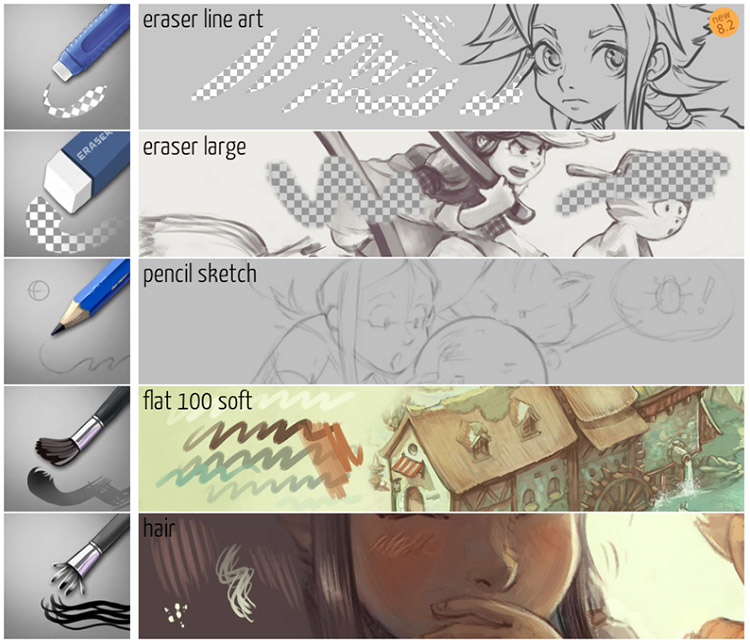

Even better if youĬan record those tests and publish them also as YouTube video.

Please leaveĪ comment below if you manage to test them out.
KRITA LINUX BRUSH SLOW SOFTWARE
Software also using the same setups I use in this video. I really like to see Krita brush performance compared against those Okay guys, if you use any other graphic software. So, kudos to all of Krita developers for this great achievement. From a user standpoint, regardless of what is going on under the hood, Krita is more performant than Photoshop. Help us to do the tedious calculation so we can focus on the fun stuff, which is making art. We really don’t care what is actually going on in the background because that is exactly what computer supposed do for us. And that is the only thing that matters for us as an artist. All that you feel when drawing in Krita is just buttery smooth performance. All the heavy calculation is done for you automatically in the background. But if you see this from the user perspective that has the “ instant preview” mode always turned on. So, is this means that Krita is not more performant compared to Photoshop or to any other graphic software out there? Well, technically if you look under the hood, yes. Then draw the brush feedback on that smaller canvas size almost instantly, while calculates the real brush stroke in the background progressively. Right? Now, what the smart developer team at Krita did, is that they managed to make Krita to take a smaller version of the canvas. The larger the data the longer it took to process it.

you name it, they all face the same problem. Photoshop, Gimp, Corel Painter, Paint tool SAI, Clip Studio Paint, etc. Essentially all graphic software performance suffered from large image and large brush size due to the amount of data they need to process. Previously known as “ LOD strokes” or “Level Of Detail strokes”. This feature is called “ Instant Preview”. Krita uses a brush speed-up mechanism that was funded back in 2015 through a Kickstarter campaign. First, let me explain about the brush previewing technique in Krita.

It just “ feel” more performant because it uses different brush previewing technique compared to Photoshop. Now, some of you who are technical geeks may argue that Krita is not more performant. Krita is now officially more performant than Photoshop. But since several releases, especially since version 4.2.1 Krita just open a whole new era that turned the condition upside down. This is the main reason why many people avoid using Krita. And this is just amazing! Because Krita in the old versions of it, is known to be slow and laggy, especially when dealing with large size document and with large size brushes. Currently at version 4.2.1 Krita is actually more responsive than Photoshop. It is related to the "customized input" setting.As you can see in this side-by-side comparison. To preemptively avoid lagging, try creating smaller-sized projects so the app will take up less memory on your device. You can reconfigure Krita to try to reduce lag in the application. This tends to resolve most issues quickly and should be your first port of call. This is the same as tilt-direction in Krita. Key Takeaways The easiest solution is to restart the Krita app. The pressure value - in digital painting - is driven by a sensor inside your stylus in contact to your stylus tip. When it turns 90 degrees counterclockwise is -90. When the pen turns 90 degrees clockwise is +90. When the active tip points to it, it is 0. This is the same as tilt-elevation in Krita. This input defines the declination of the stylus tilt. This input defines the angle of a stroke, in degrees. This is related to "stroke duration" and "stroke holdtime" settings. This input goes slowly from 0.0 to 1.0 while the stroke is being applied. Similar to fine speed but it changes very slowly.įast and random noise, changes with every brush stroke. Dynamic Inputs are a way for MyPaint to get information of the external devices as a drawing tablet for instance the pressure over the drawing tablet, the speed of pencil movement, the pencil tilt.


 0 kommentar(er)
0 kommentar(er)
